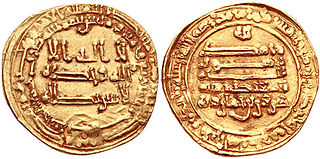This article does not cite any sources .(August 2007) (Learn how and when to remove this template message) |
Shayban ibn Ahmad ibn Tulun was the fifth and last Emir of the Tulunids in Egypt (904-905).

An emir, sometimes transliterated amir, amier, or ameer, is an aristocratic or noble and military title of high office used in a variety of places in the Arab countries, West Africa, and Afghanistan. It means "commander", "general", or "High King". The feminine form is emira. When translated as "prince", the word "emirate" is analogous to a sovereign principality.

The Tulunids, were a dynasty of Turkic origin and were the first independent dynasty to rule Islamic Egypt, as well as much of Syria. They remained independent from 868, when they broke away from the central authority of the Abbasid dynasty that ruled the Islamic Caliphate, until 905, when the Abbasids restored the Tulunid domains to their control.

Egypt, officially the Arab Republic of Egypt, is a country spanning the northeast corner of Africa and southwest corner of Asia by a land bridge formed by the Sinai Peninsula. Egypt is a Mediterranean country bordered by the Gaza Strip and Israel to the northeast, the Gulf of Aqaba and the Red Sea to the east, Sudan to the south, and Libya to the west. Across the Gulf of Aqaba lies Jordan, across the Red Sea lies Saudi Arabia, and across the Mediterranean lie Greece, Turkey and Cyprus, although none share a land border with Egypt.
A son of the dynasty's founder, Ahmad ibn Tulun, he succeeded his nephew Harun ibn Khumarawayh, who was killed in a mutiny in December 904 during the invasion of Egypt by the Abbasid Caliphate. After years of mismanagement, the emirate was beyond rescue - he was forced to retreat with his army to Fustat, where on 10 January 905 he surrendered unconditionally to the Abbasid commander Muhammad ibn Sulayman al-Katib, ending the rule of the Tulunids.
Ahmad ibn Tulun was the founder of the Tulunid dynasty that ruled Egypt and Syria between 868 and 905. Originally a Turkic slave-soldier, in 868 Ibn Tulun was sent to Egypt as governor by the Abbasid caliph. Within four years Ibn Tulun had established himself as a virtually independent ruler by evicting the caliphal fiscal agent, Ibn al-Mudabbir, taking over control of Egypt's finances, and establishing a large military force personally loyal to himself. This process was facilitated by the volatile political situation in the Abbasid court and the preoccupation of the Abbasid regent, al-Muwaffaq, with the wars against the Saffarids and the Zanj Rebellion. Ibn Tulun also took care to establish an efficient administration in Egypt. After reforms to the tax system, repairs to the irrigation system, and other measures, the annual tax yield grew markedly. As a symbol of his new regime, he built a new capital, al-Qata'i, north of the old capital Fustat.

Harun ibn Khumarawayh was the fourth Tulunid ruler of Egypt (896–904). He succeed his elder brother Abu 'l-Asakir Jaysh, who had been murdered by army chiefs. He left state affairs to the vizier Abu Ja'far ibn Ali, preferring to live a life of dissolute luxury. This led to a growing crisis in the country, since state finances could not be regulated and the army leaders gradually accrued more power to themselves

The Abbasid Caliphate was the third of the Islamic caliphates to succeed the Islamic prophet Muhammad. It was founded by a dynasty descended from Muhammad's uncle, Abbas ibn Abdul-Muttalib, from whom the dynasty takes its name. They ruled as caliphs for most of the caliphate from their capital in Baghdad in modern-day Iraq, after having overthrown the Umayyad Caliphate in the Abbasid Revolution of 750 CE (132 AH).
| Preceded by Harun ibn Khumarawayh | Tulunid Emir of Egypt 904–905 | Abbasid reconquest |
| This Egyptian biographical article is a stub. You can help Wikipedia by expanding it. |
| This biography of a member of an African royal house is a stub. You can help Wikipedia by expanding it. |





